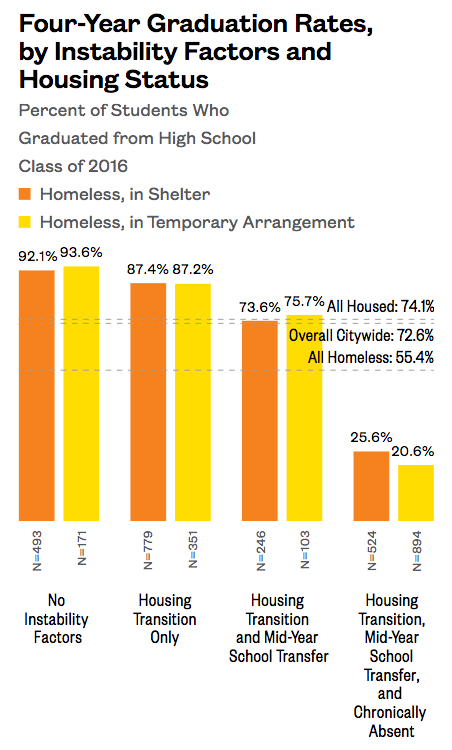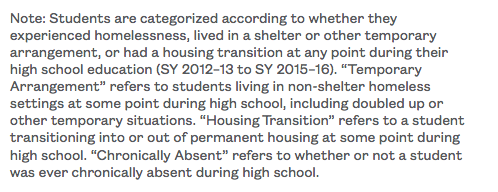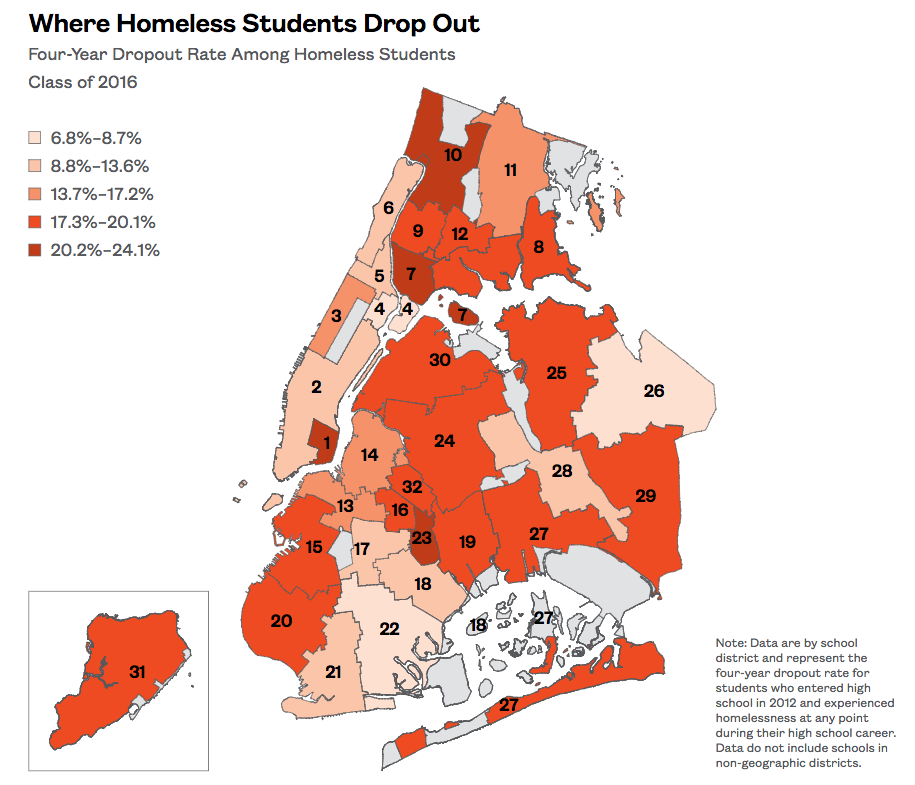Students living in homeless shelters face more academic challenges than their classmates who live in stable housing; in some school districts, one in four homeless students drop out. East Harlem’s 0% dropout rate among homeless students living in shelter, however, shows that if given the proper supports, students who have experienced homelessness are successful in school and graduate at rates equal to their peers. What makes the difference between dropout and graduation for these teens living in unstable housing settings? Can community and school supports lower dropout rates?
Dawan Julien, Managing Director, OST, of the East Harlem Tutorial Program (EHTP) works with many students living and going to school in East Harlem, and others living in temporary housing. Through her work, she has seen that increasing academic success and stability means connecting students and their families with social support services—an approach that especially benefits students living in temporary housing. Dawan told us that EHTP “gives [students in temporary or overcrowded housing] familiarity. Our program can really start to feel like home to students who have been here for a long time.” For teens living in homeless or temporary settings, who may or may not be accompanied by their parents, that stability can mean the difference between graduating and dropping out.
We know that overall, homeless students are more likely than their housed classmates to drop out of high school without graduating. But for students whose instability is minimized—such as those remaining in the same living situation for all four years of high school, not transfering schools, and those who are not chronically absent—the chances of dropping out are very low. In fact, their chances of dropping out are lower than the citywide average for all public school students. Even if a student is homeless and undergoes a housing or school transfer, he or she is still as likely to graduate from high school as the average New York City high school student.


East Harlem is an example of the importance of maintaining stability and supporting homeless students. The overall dropout rate in the school district for homeless students is 7.9%—among students living in shelter, it is an amazing 0%. This is thanks to several factors, including a robust network of community services like EHTP.

EHTP emphasizes flexibility for their participants and knows that their families have multiple needs. For example, the program offers transportation assistance to families who may be placed in shelters across the city. In addition, EHTP provides snacks and meals to students in the program after school and during the summer, as well as homework help and study spaces after school. Dawan explained that “if you don’t have quiet space or adequate space or your own dedicated space to do homework, it can be difficult to get your work done.”
When homeless students’ lives are in flux, programs like EHTP act as a constant and support teens on their way toward graduation. Dawan observed that “some of the kids had varying struggles in school, and obviously things like that were exacerbated when they became homeless. The reason they were able to recover and persist is that they had support. If they didn’t have that, it would have been really hard for them to rebound. They’re all still in school, all in the program, and really engaged. With the most vulnerable students, it makes such a difference.”
Kaitlin Greer, Policy Analyst